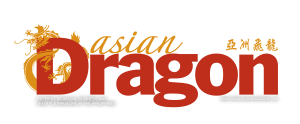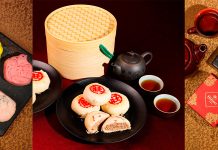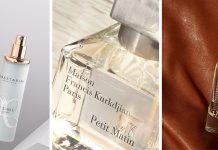Riding Hyundai’s 2016 compact crossover 2.0 CRDi GLS

The year 2016 was a banner one for Hyundai Asia Resources Inc. (Hari) in the Philippines, and the company lived up to its acronym. Like a conquering monarch, the house of Hyundai surged with a whopping 53 percent growth in sales. In fact, among the best-selling vehicle brands in the Philippines in 2016, Hyundai grabbed the third place spot, just behind Toyota and Mitsubishi. By selling more than 33,000 vehicles last year, they edged out Ford for the bronze medal.
It was a hard-fought and well-deserved victory for the Korean brand, which continues to challenge the status quo with their vehicles. Apart that of the ubiquitous Starex, which has become the unofficial Pinoy family van, their record sales was propelled by the mini-hatchback Eon, the subcompact Accent, and our subject here, their compact crossover, Tucson.
In the past few years, curvaceous and organic shapes became emblematic to Hyundai vehicles. Now, with the advent of their improved design language, which they call Fluidic Sculpture 2.0, Hyundai has trimmed the curves in their lineup, opting instead for straighter lines and chiseled angles. Nowhere is this new aesthetic direction better implemented than in this all-new, third generation Tucson.
Taking a page out of Audi, the large hexagonal grille has become Hyundai’s standard corporate look for almost all of its cars, now also seen in the Sonata and Elantra sedans. But somehow, its execution in the Tucson is particularly striking. Perhaps it is because the two sides of the hexagon connect so neatly with the very long and narrow headlamps. The square-jawed bumper, which stylishly houses the foglamps, contributes greatly to the handsome, flat-front façade.
Viewed from the side, bonnet to cabin proportions look perfect, due mostly to the sloping roof in the back. The door panels have creases that add dimension and depth to an already fetching profile. The spoiler-topped tailgate has a few curves, but it works well to soften the silhouette. The 2,670 mm-long wheelbase pushes the 18-inch wheels out to the corners, so there is little overhang both in the front and back. Although we still tend to think of the Tucson as the smaller version of the Santa Fe, the former now actually eclipses its larger sibling in terms of styling.
When we reviewed the Santa Fe, we knocked the cabin’s build quality for not being up to snuff for its asking price. The Tucson is quite the improvement. The shapes of the AC vents, head unit, tweeters, and speakers are still shaped like leaves, but the layout is cleaner and looks higher-end. A better fit and finish blesses the dashboard, center console, and door panels, and the materials, while still plastic, feel softer and better insulated.
Our stereo unit is a basic 2-din affair, but at least it has Bluetooth, 3.5-mm auxiliary and USB inputs. No reversing camera in this unit, but the sensors made parking a breeze. The seats in the GLS were draped in black and dark gray fabric. Although leather would have been more preferable, the design of the mesh and texture of the cloth was first-rate. The front buckets themselves were contoured to wrap around our posteriors, and were comfortable even on long rides. The driver’s seat had power adjustment, which was a welcome bonus. The second row has a lower seating position, and it is a bit claustrophobic. The beltline is so high that it is almost level with this writer’s shoulder, resulting in a hampered view of the outside world. Trunk space is plenty, even when the floor housed a full-sized spare underneath. We found the automatic folding mirrors, a feature usually reserved for luxury vehicles, a nice touch.


A push-start button wakes up the 2.0-liter common rail direct injection engine, and all was quiet in the cabin. The excellent noise insulation kept the diesel rattle to a minimum, and it was hardly noticeable on the road. With 185 ps (182 hp) and 402 Nm of torque, the four-cylinder power plant was more than enough to carry the vehicle’s curb weight, even with a full complement of five passengers. The power steering was light, offering little resistance and road feel. The six-speed transmission did a tremendous job of anticipating gear changes, but paddle shifters would have been nice.


The Tucson was designed to be an easy-to-drive city vehicle with lots of power to spare, and that much is it is. It was pretty thrifty, too. In our short time with the Tucson, the trip computer reported 8.1 kilometers per liter at an average speed of 18 kph.
As for the cost of ownership, the Tucson 2.0 CRDi GLS 2WD is priced at P1.538 million, which is on the expensive side for a mid-tier compact SUV with few luxurious amenities. Some car buyers willing to pay a million and a half may just opt for a better-equipped PPV like the Ford Everest Trend instead.


Next level up is the top-of-the-line 4WD version with the bells and whistles, but that one tips the scales at P1.9 million, making it about the same price as the diesel-fed Mazda CX-5 Skyactiv-D. If you do not mind petrol, and a subtraction in power, the Tucson also comes in the guise of a basic 2.0-liter gas version, priced at an extremely enticing P1.188 million. Banking on its looks alone, we have a feeling this one will be a bestseller.

The new Tucson is certainly a massive improvement from its predecessors. If this crossover is the new benchmark of design, refinement, and efficiency for Hyundai, then things are looking up for this marque, and we anticipate bigger and better things for it in the years to come. AD






































